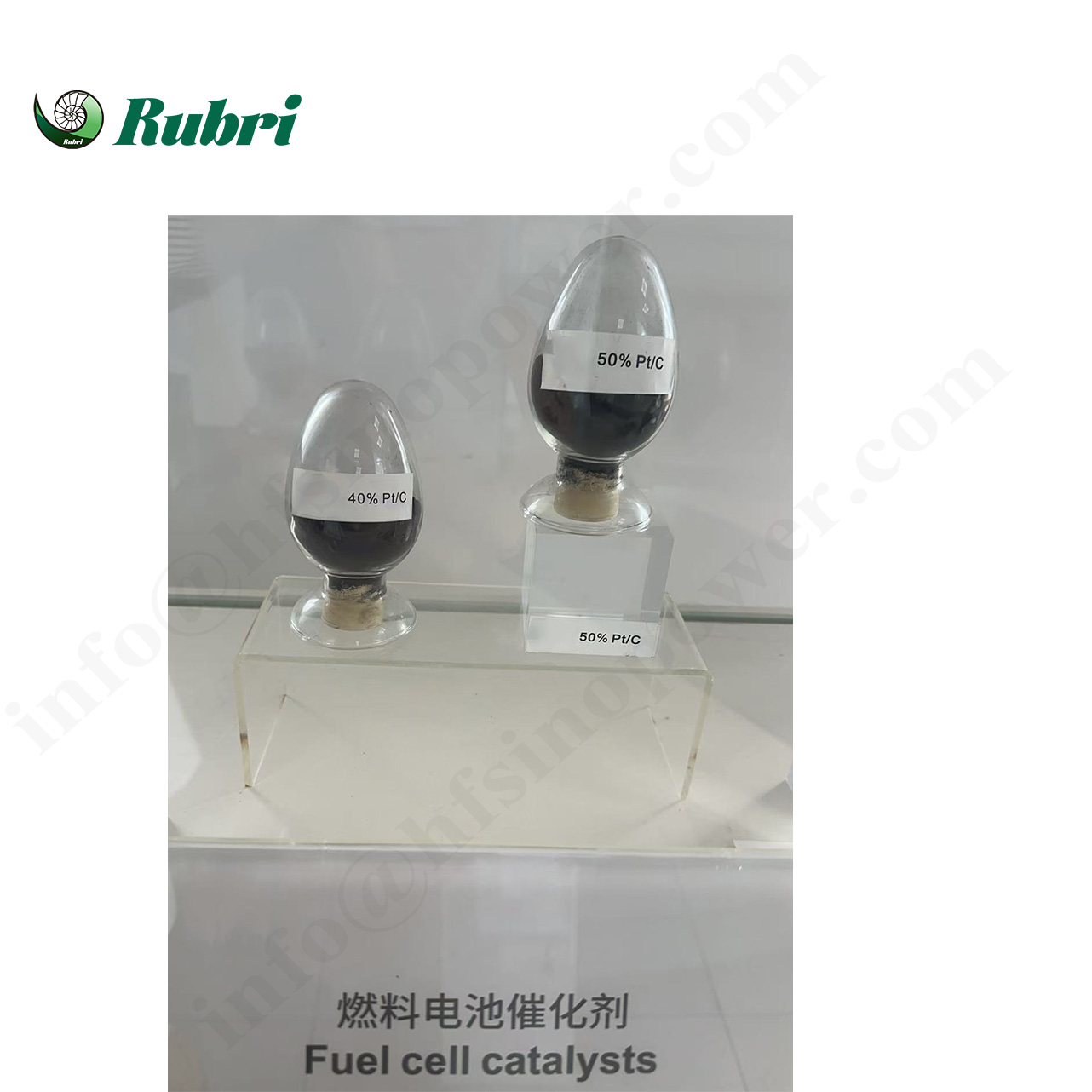What Are You Looking For?
The anode catalyst of fuel cells is a key material responsible for catalyzing the oxidation reaction (such as hydrogen oxidation reaction, HOR) of fuels (such as hydrogen, methanol, etc.) in fuel cells, and its performance directly affects the efficiency, stability, and cost of the cell.
Brand :
RubriProduct Description

The Pt/GC fuel cell anode catalyst
Advantages:
Ultra high stability:
The oxidation resistance of graphitized carbon is significantly better than that of ordinary carbon black, and it hardly corrodes in acidic/high-temperature environments.
It can effectively suppress the sintering and detachment of Pt particles, prolong the catalyst life (such as increasing durability by 3-5 times).
Enhanced conductivity: After graphitization, the lattice defects of carbon are reduced, and the electron conduction rate is higher.
Specification
| Name |
Quality Specific Activity A/Mg Pt |
Electrochemical Surface Area Range ECSA (m2/g) |
Platinum Particle Crystal Size Range * XRD Nm |
|
20% Pt/GC
|
0.23-0.25
|
50-61
|
3.8-5.0
|
Application Scenarios

High durability requirements: such as fuel cell vehicles and fixed power generation systems.
High temperature fuel cells, such as phosphoric acid fuel cells (PAFC) or partially SOFC anode modified layers.